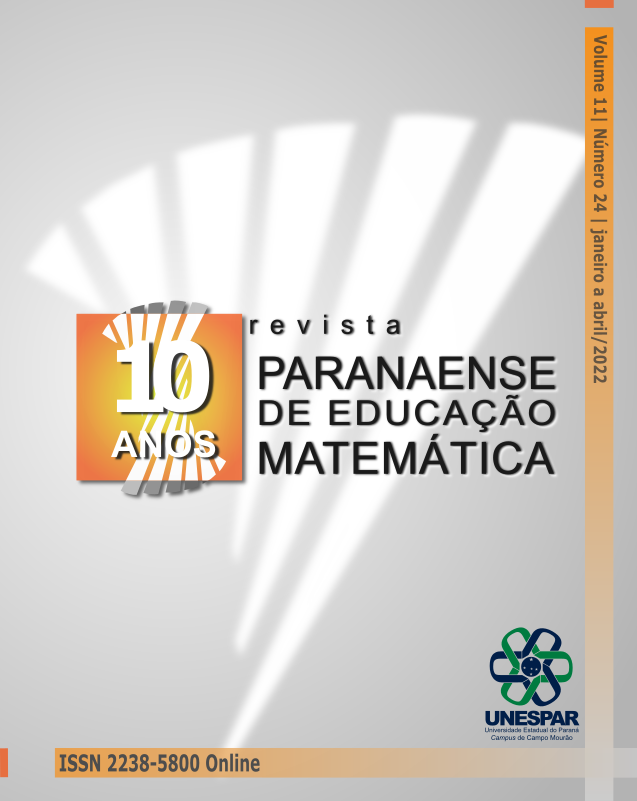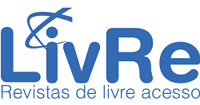OS CURRÍCULOS DE MATEMÁTICA MOLDADOS, EM AÇÃO E REALIZADOS: UMA ANÁLISE DA COMBINATÓRIA NA EDUCAÇÃO DE JOVENS E ADULTOS
Abstract
We present an excerpt of the main findings of a doctoral study that analyzed, in the light of from the Theory of Conceptual Fields (VERGNAUD, 1986), the work with Combinatorics in the shaped curricula, in action and carried out by two teachers of Youth and Adult Education (EJA). To this end, interviews were conducted, teaching plans were requested and analyzed, Combinatorial classes and the effects of teaching practice were observed. It was found that teachers showed little knowledge of the content, their approach to curriculum materials and their teaching and learning processes. However, in the modeling, they proposed different combinatorial situations, their invariants and varied symbolic representations. It was noticed that the teachers included in their curricula in action different situations of Combinatorics, being in the 1st segment only measurement products and four types of situation in the 2nd segment. The invariants were considered in the development of their classes, as well as the use of drawings, images, lists and trees of possibilities as symbolic representations. With regard to the effects of practices, both students and teachers evidenced learning with the development of strategies for systematizing the data contained in the problems. It is concluded that it is necessary to go deeper into the different segments of EJA, with regard to the curricula that are molded, in action and carried out – in particular regarding the combinatorial situations dealt with, their invariants and modes of symbolic representation.
Downloads
References
BORBA, R. O Raciocínio Combinatório na Educação Básica. Anais do X Encontro Nacional de Educação Matemática – ENEM. Bahia, 2010.
BORBA, R.; PESSOA, C.; ROCHA, C.; ASSIS, A. A formação de professores de anos iniciais do Ensino Fundamental para o ensino da Combinatória. Revista Paranaense de Educação Matemática. Campo Mourão, PR, v. 3, n. 4, jan.- jun. pp.115-137. 2014.
BRASIL. Educação para Jovens e Adultos: ensino fundamental: proposta curricular - 1º segmento. Brasília: MEC, 2001.
CONTRERAS, D.J. Que e como ensinar? O curriculum como local de experimentação e área de conflito. Quina. 1989.
CUNHA, M.; LIMA, A. P.; ROCHA, C. Raciocínio combinatório: compreensão dos professores dos anos finais do Ensino Fundamental. Anais 21. In: Encontro de Pesquisa Educacional do Norte e Nordeste - EPENN. Recife.2013.
FIORENTINI, D.; NACARATO, A. (orgs.). Cultura, formação e desenvolvimento profissional de professores que ensinam matemática: investigando e teorizando a partir da prática. Musa Editora, São Paulo, 2005.
FONSECA, M.C. F.R. Educação Matemática de Jovens e Adultos. Belo Horizonte/MG: Autêntica, 2002.
LIMA, A. P. Princípio Fundamental da Contagem: Conhecimentos de professores de Matemática sobre seu uso na resolução de situações combinatórias. 2015. Dissertação (Mestrado em Educação Matemática e Tecnológica), Universidade Federal de Pernambuco. UFPE. Recife, 2015.
LIMA, E.T.; Borba, R. Relações entre o Raciocínio Combinatório e o Raciocínio Probabilístico na EJA. Revista Paranaense de Educação Matemática, v. 7, p. 33-60, 2018.
MARTINS, G; BORBA, R. Do prescrito ao apresentado: A Combinatória no currículo dos anos iniciais da EJA. Revista Perspectiva em educação Matemática, v.15, n.36, 2021.
PESSOA, C.; BORBA, R. Quem dança com quem: o desenvolvimento do raciocínio combinatório de crianças de 1a a 4a série. Zetetiké – Cempem – FE – Unicamp, v. 17, jan - jun, p.105-147. 2009.
ROCHA, C. Formação docente e o ensino de problemas combinatórios: diversos olhares, diferentes conhecimentos. Dissertação (Mestrado em Educação Matemática e Tecnológica). Universidade Federal de Pernambuco. UFPE. – Recife, PE, 2011.
SACRISTÁN, J. G.; GÓMEZ, P. A. I. Compreender e transformar o ensino. 4º ed. São Paulo: Artmed, 1998.
SACRISTÁN, J. G. O currículo: uma reflexão sobre a prática. 3. ed., Porto Alegre: Artmed, 2000.
SACRISTÁN, J. G. Saberes e incertezas sobre o currículo. Porto Alegre: Penso, 2013.
SHÖN, D. Educando o profissional reflexivo: um novo design para o ensino e a aprendizagem. Porto Alegre: Artmed, 2000.
SHULMAN, L. S. Conocimiento y enseñanza: fundamentos de la nueva reforma. Profesorado. Revista de Currículum y Formación de Profesorado. v.9, n.2, Granada, España, pp.1-30, 2005.
TARDIF, M. Saberes docentes e formação profissional. Petrópolis: Vozes, 2002.
VERGNAUD, G. A classification of cognitive tasks and operations of thought involved in addition and subtraction problems. In: Carpenter, Thomas, Moser,Joseph &Romberg, Thomas. (Eds.), Addition and subtraction: a cognitive perspective. Hillsdale, N. J.: Lawrence Erlbaum, 1982
VERGNAUD, G. Psicologia do desenvolvimento cognitivo e didática das matemáticas. um exemplo: as estruturas aditivas. Análise Psicológica, 1, p. 75-90. 1986.
____________. A teoria dos campos conceptuais. Em J. Brum (org.) Didáctica das Matemáticas (155-191). Lisboa: Horizontes Pedagógicos.1996.
____________. Teoria dos campos conceituais. ln: Anais do 1° Seminário Internacional de Educação Matemática do Rio de Janeiro. Rio de Janeiro, 1999 (tradução).
Downloads
Published
How to Cite
Issue
Section
License
Copyright (c) 2022 Revista Paranaense de Educação Matemática

This work is licensed under a Creative Commons Attribution-NonCommercial-NoDerivatives 4.0 International License.










